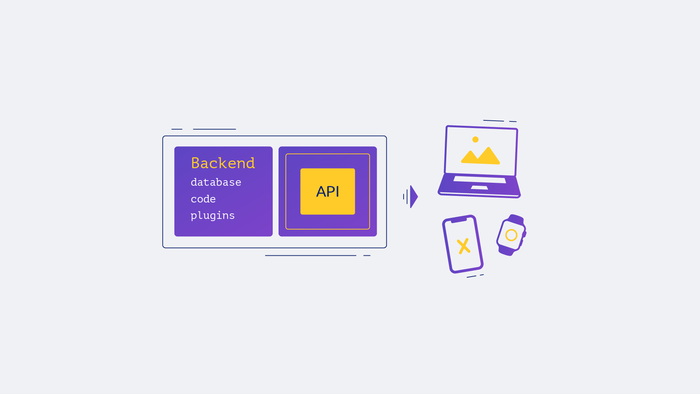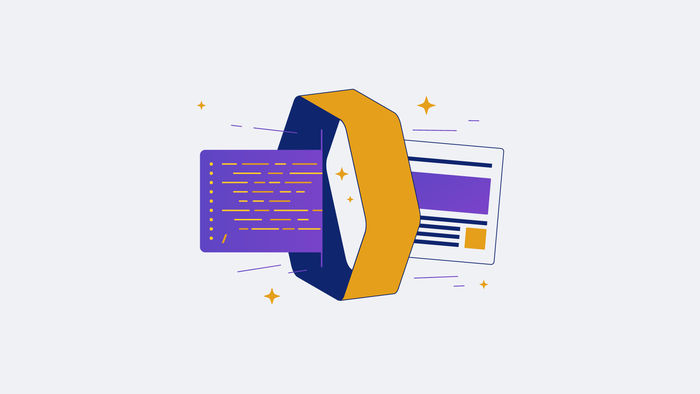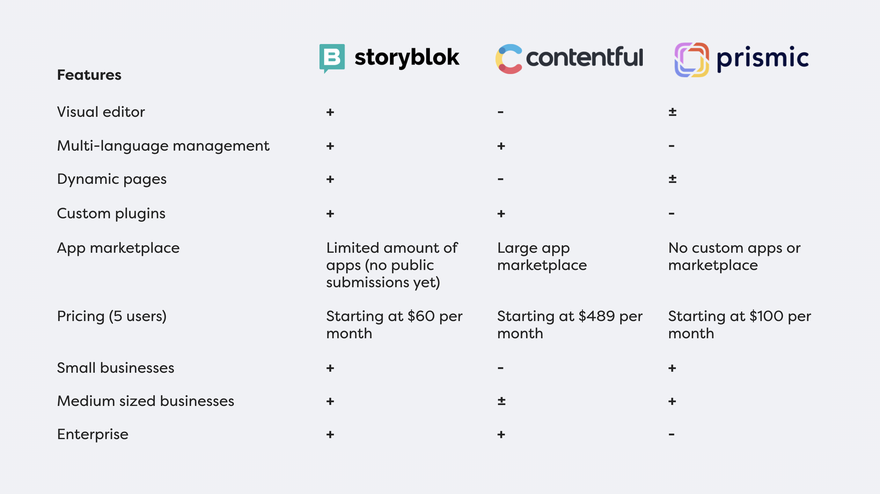Headless or traditional content management? What is the best option for eCommerce brands? While using a traditional CMS has been the standard for years, more companies are looking into headless CMS solutions. Why? The eCommerce market is changing and brands are looking for more flexibility and scalability. Read on to learn more about:
Traditional CMS vs. Headless CMS
What is a headless CMS?
Why eCommerce brands are embracing headless CMS’s
When should I opt for a headless CMS?
How to pick the right headless CMS for your business
Top 3 headless CMS solutions for eCommerce brands
Traditional CMS vs. Headless CMS
To truly understand what a headless CMS is, we need to take a look at traditional CMS systems first. The first content management systems on the market came from platforms like WordPress and Sitecore. These CMS’s were designed to store and present content and media, including text, images, and videos on websites.
While this worked great, the traditional CMS systems weren’t able to keep up with the evolving market. Now businesses are developing not only websites but mobile sites, apps, digital displays, and applications for smart devices such as Alexa. The problem with traditional CMS systems is that they organize content in a webpage-oriented framework, meaning it's tight to HTML and CSS code. This makes it impossible to reuse and present your content on other digital platforms. Hence the rise of headless CMS systems.
What is a headless CMS?
A headless CMS is a back-end-only content management system (CMS). The ‘head’ relates to where you publish your content, the front-end. The ‘body’ relates to where your content is stored and where you can edit it, the back-end. With a headless CMS, you create and store the content in the body or back-end and deliver your content as data over an API to wherever you choose. This way you create and store the content in one place and then distribute it to whatever platform you want.
Why are eCommerce brands embracing headless CMS systems?
Today’s shoppers expect a tailored experience on whatever device they are browsing or shopping from. In addition to that, competition is fierce. eCommerce brands pop up every day. As a result eCommerce brands need to be everywhere and deliver a great shopping experience. Reusing and distributing content to different digital platforms has become a necessity to thrive in today's market. Headless CMS systems offer many benefits over their traditional counterparts, including better performance, scalability, customization, and compatibility. Here are the most important features explained in-depth.
1. Unifies data into a single headless content hub
With a headless CMS, you organize your content by types of content, or in other words blocks. Such a content block breaks down content into different elements, such as a blog post headline, image slider, FAQ section, or the copy on a call to action button. This makes an end to endless copy and paste work. Resulting in improved brand consistency across platforms and less work for your eCommerce / marketing team. In addition, changing the content in one place automatically applies it to everywhere that content is located. Solving the complex content problems, eCommerce brands face when selling in multiple countries.
2. A Headless CMS scales with you (in the cloud)
Traditional CMS systems usually host the content in-house, making it more difficult to handle traffic and scale because of limited servers. Headless CMS systems are cloud-based. Meaning your content is hosted in the cloud. As a result, headless CMS systems can easily handle traffic influxes and can scale endlessly to support whatever new devices, platforms, and traffic you put on to it.
3. Enables collaboration
No more waiting around. With a headless CMS, you can work on content with as many people as you want at the same time. This results in a competitive advantage over eCommerce bands that use a traditional CMS. eCommerce brands using a headless CMS can rapidly create landing pages, microsites and run A/B tests.
4. More customization
A big drawback of traditional CMS systems, such as the CMS that comes with your Shopify store, is their limited customization. Some systems only allow you to slightly customize the user interface (UI). Other systems allow you to customize a bit more but regardless, customization is very limited with a traditional CMS. With a headless CMS, you have all the flexibility you need. Customization is limitless, you can create new content types, extend your platform's functionality with third-party apps, change the UI to represent your brand, define editor roles, and much more.
5. Better security
Last but not least is security. With a headless CMS, your content is separated from the presentation layer. Meaning a smaller area of attack for hackers.
When should I opt for a headless CMS?
At Story of AMS, we have built countless eCommerce stores. Through this experience, we have learned firsthand when it makes sense to opt for a headless CMS. Down below we have listed the most important factors. If any of these describe your eCommerce business you should really consider switching to a headless CMS.
Personalization - If you are personalizing or want to better personalize the customer experience based on shopping behavior, browsing history, or other owned data.
Global presence - You are selling in multiple countries and want to store all of your localized content in one place and deliver the right version to customers based on their location.
High-traffic - Experience peaks in traffic and want to boost conversions and engagement with a faster and more scalable experience.
Omnichannel presence - Share your content with social commerce, have mobile and web experiences, or even wearables.
Headless commerce - If you have already gone headless, using a headless CMS is the way to go.
How to pick the right headless CMS for your eCommerce business?
The goal of a headless CMS is to empower teams to make changes and update content faster, especially non-technical teams. Therefore, looking at systems that are easy to use for non-technical teams is a great way to start scouring your options. Our suggestion, involve both your development and marketing team in the decision-making process. In the end, it must be easy to use for developers and allow marketers to create content-rich shopping experiences independently.
Something else to look for is whether or not the Headless CMS system integrates with your frontend framework of choice and your backend eCommerce platform. Your CMS system needs to be able to read data from every third-party tool you use, from your CRM to ERP. When evaluating this, make sure to include your developers to look into each system's API’s and the level of customization they support.
Once you have decided to switch to a headless CMS, ask yourself the following questions to get even more clear about your needs:
Can I create the kind of content structures I need with this CMS?
Do I want, or need to, look after content hosting and maintenance myself?
Will my content be stored in a secure and privacy-compliant manner?
Would real-time editing and collaboration improve my workflows?
Do they have a visual editor?
Can I easily serve multiple countries and languages from one hub?
Can I scale my content ops without falling off a price cliff?
How does it manage files and image assets?
What are the top 3 headless CMS systems for eCommerce
Below we’ve outlined the most important factors that eCommerce brands value and how the top 3 headless CMS systems, Storyblok, Contentful, and Prismic match up.
Having worked with all three headless CMS systems over the past years, we have chosen to work solely with Storyblok. For us and our eCommerce clients, Storyblok is superior in visual editing capabilities, multi-language management, dynamic pages and grows with you in terms of its features and the pricing model.
Another great headless CMS (not featured in the visual) is GraphCMS. GraphCMS is a native GraphQL headless CMS and is the first enterprise-class platform. With the industry's most versatile GraphQL content APIs and the ability to federate the external data via API extensions it provides you capabilities that go beyond the simple headless content management system.
Conclusion
Chopping off the presentation layer of your content, allows brands to be more nimble and adjust faster to market changes. If you are serious about eCommerce and want to win the next decade, going for headless CMS is definitely the way to go. In addition to that, if you ever want to change your technology stack, you don’t have to worry about your content because they are decoupled.
/f/95036/1920x1080/f07c4b6647/frame-287.png)

/f/95036/1920x1080/d2d1bfc499/headl.png)

/f/95036/2760x1548/76d2c49460/schermafbeelding-2021-09-07-om-15-47-27.png)
